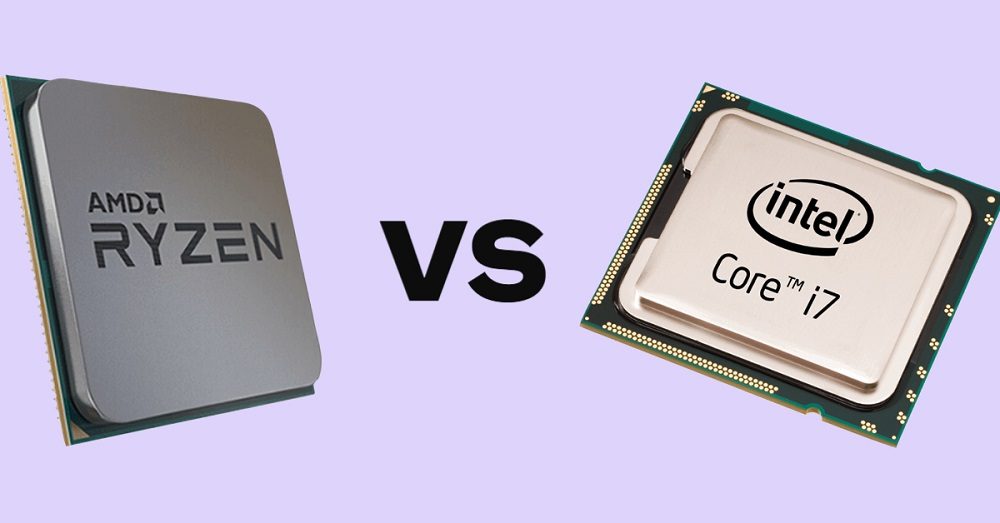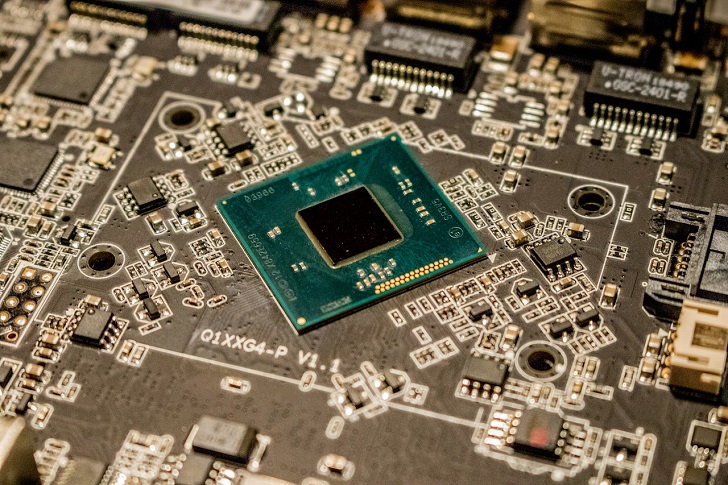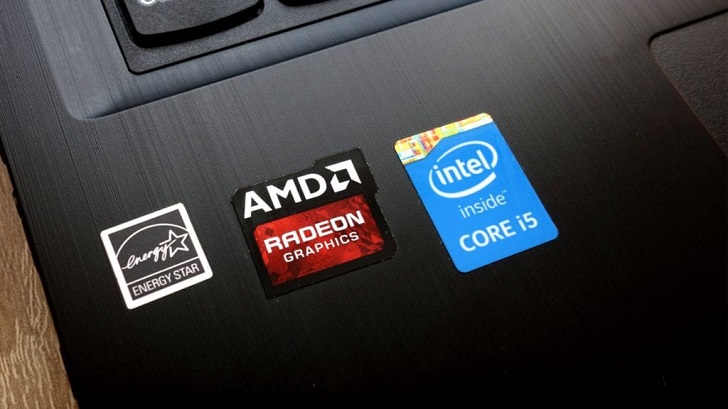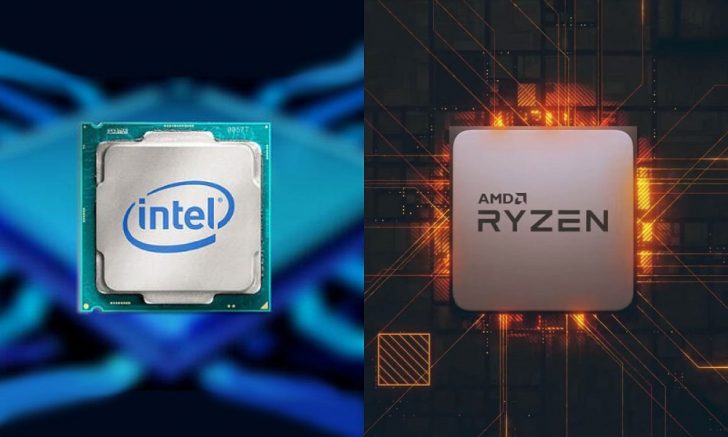
AMD vs. Intel: The Ultimate Showdown

When building a new PC, the age-old choice between AMD and Intel remains a cornerstone. Like the classic macOS versus Windows debate, the rivalry between AMD and Intel is among the most engaging topics for PC enthusiasts.
Now, the competition is more intense with AMD’s Ryzen 7000 CPUs and Intel’s 13th-generation Raptor Lake processors on the scene. Let’s dive into the current state of the AMD versus Intel battle, leaving behind the historical head-to-head and focusing on the present.
A Quick Look at the AMD-Intel History
AMD and Intel, two giants in the PC-building world, have been battling for supremacy for decades. They’ve consistently pushed the boundaries to offer gamers, casual users, and professionals the fastest, most powerful, and feature-rich processors.
Throughout the years, they’ve engaged in a back-and-forth exchange, with AMD introducing groundbreaking designs and Intel countering with revolutionary chips. But the launch of AMD’s Ryzen processors in 2017 marked a turning point.
These chips shook the industry by challenging Intel’s dominance and sparked a new era of competition. Fast forward to today, and both companies stand neck and neck, delivering unparalleled CPU performance through their latest designs, complete with more cores, higher clocks, and innovative features.

Jeremy Waterhouse/ Pexels | The cost of Intel and AMD CPUs are almost similar
Price and Performance
In the realm of processors, AMD and Intel have extensive lineups worth considering for your next PC upgrade. The spotlight is on AMD’s Ryzen 7000 series and Intel’s 13th-generation Raptor Lake processors.
These offerings boast up to 24 cores with clock speeds inching towards 6GHz, and cache capacities that leave previous-generation CPUs in the dust. Let’s break down the latest mainstream CPUs from both companies:
AMD and Intel Processor Comparison
AMD and Intel offer options from their previous generations – Ryzen 5000 and Alder Lake 12th-gen, respectively. While these are credible choices, they don’t match the performance and features of their latest counterparts. Both companies also cater to budget-conscious consumers, with options as low as $50. However, these are best suited for lightweight computing needs.
The Quest for the Fastest Processor
Both Intel and AMD offer solid options for gaming and productivity tasks like video editing and transcoding. While the best value for your money lies in the midrange segment, flagship CPUs from both manufacturers shine in gaming and demanding multi-threaded tasks.
Intel’s Core i9-13900K boasts 24 cores (8 + 16) and supports up to 32 threads, while AMD’s top-tier CPU adopts a more traditional 16-core, 32-thread configuration. These chips fiercely compete in demanding games and excel in workplace applications. The 13900K takes the lead in scenarios that leverage more cores, while AMD pulls ahead in applications that rely on powerful individual cores.

Hardsoft/ Stock Image | Intel’s data center CPU revenue dropped by 16% YoY in 2022,
For gaming enthusiasts aiming for exceptional value, Intel’s Core i5-13600K hits the sweet spot around the $300 mark. On the other hand, AMD’s 7600X lags, and the 7700X, though pricier, does not deliver as competitively as its Intel counterpart. However, AMD’s 3D V-Cache processors cater specifically to gamers, providing an alternative gaming-focused solution.
High-End Desktop Processors
You require substantial processing power across numerous cores if you’re a power user engaged in high-resolution video editing, intensive video transcoding, or CAD work. While mainstream CPUs suffice for many, those seeking even more power should consider high-end desktop (HEDT) CPUs.
Although Intel offers HEDT CPUs like the 18-core Core i9-10980XE, they’ve fallen behind the latest high-end mainstream offerings. In contrast, AMD’s Threadripper Pro range, part of the Ryzen 5000 series, dominates this space. With 24, 32, and even 64 cores, these Threadripper CPUs are a force to be reckoned with.
Supporting double the number of simultaneous threads, these CPUs maintain clock speeds around 4.5GHz. Their exceptional performance surpasses Intel’s alternatives, along with greater PCI-Express lane support—128 compared to Intel’s 44—making them more suitable for extensive storage arrays.
While investing thousands in a 64-core 5995WX might seem steep, the gains in work efficiency could justify the expense. Looking ahead to 2023, AMD’s Ryzen 7000 Threadripper CPUs promise even greater capabilities, potentially offering a staggering 96-core Threadripper CPU.

James Montantes/ Stock Images | Both AMD and Intel offer a range of technologies that enrich the user experience
Laptop Processors
The laptop market paints a different picture. While many laptops feature Intel processors across various generations, AMD CPUs are becoming increasingly prevalent. The recent Ryzen 6000 and upcoming Ryzen 7000 mobile CPUs showcase impressive performance and efficiency gains.
Intel’s latest laptop CPUs belong to the Raptor Lake generation, available in most laptop segments. The Alder Lake lineup includes low-power U, efficient-performance P, and high-power H and HX models. Performance varies across these models, with some H and HX CPUs featuring fewer cores than P CPUs. This highlights the importance of task-specific performance.
Ryzen mobile CPUs come in different tiers:
- C: Low power
- U: Efficient performance
- HS: Efficient high, performance
- H/HX: Highest performance
Laptops with U- and P-type CPUs prioritize battery life and integrated graphics. H and HX CPUs, however, are tailored for gaming and workstation laptops, often paired with powerful GPUs.
The new Ryzen 7000 generation from AMD is asserting dominance in high-end performance for laptops. The version of mainstream chips is yet to be seen.
More in Tech
-
`
5 Savings Accounts That Will Earn You the Most Money in 2024
In 2024, choosing the right savings account is more critical than ever. With the array of options available, knowing which savings...
June 5, 2024 -
`
The Complete Relationship Timeline of Taylor Swift & Travis Kelce
When you think of unlikely couples, Taylor Swift and Travis Kelce might not be the first pair that comes to mind....
May 29, 2024 -
`
What is Business Administration and What Opportunities Does it Offer?
In today’s bustling world of commerce and industry, the term “business administration” often looms large, yet its true essence remains shrouded...
May 22, 2024 -
`
What is AI? Exploring the World of Artificial Intelligence
In today’s rapidly evolving technological landscape, the term “Artificial Intelligence” (AI) has become a buzzword that sparks curiosity, speculation, and even...
May 16, 2024 -
`
How Many Jobs Are Available in Real Estate Investment Trusts? Exploring Career Opportunities
Are you seeking a career path with a blend of financial savvy and a knack for the real estate market? Look...
May 9, 2024 -
`
The Staggering Net Worth of the Richest Podcaster Joe Rogan in 2024
Joe Rogan has become a household name, largely due to his immensely popular podcast, “The Joe Rogan Experience.” With a blend...
April 29, 2024 -
`
What Are Routing Numbers & Do Credit Cards Have One?
When managing your finances, understanding the various numbers and terms associated with your bank accounts and credit cards is crucial. A...
April 24, 2024 -
`
Tesla Stock: Let’s Address the Elephant in the Room
Why is Tesla stock dropping? This is the million-dollar question that has been on the minds of investors and enthusiasts alike...
April 16, 2024 -
`
Bearer Bonds: Definition, How They Work & Are They Valuable?
Bearer bonds are unique securities that have a colorful history and a distinctive way of functioning that sets them apart from...
April 10, 2024















You must be logged in to post a comment Login